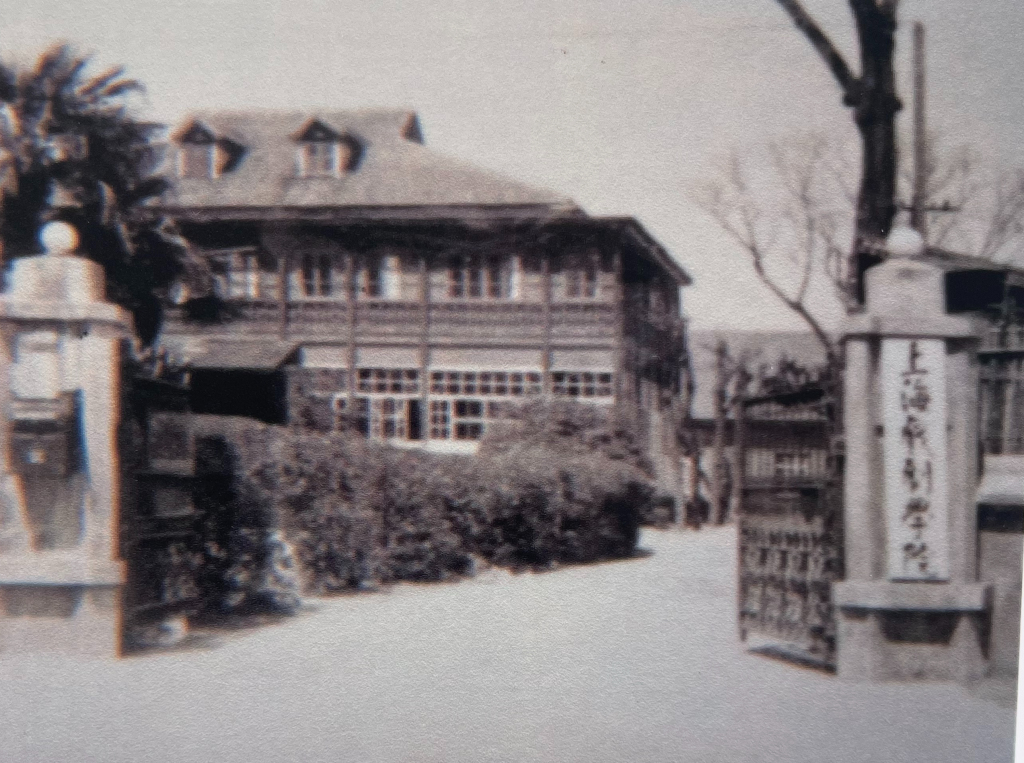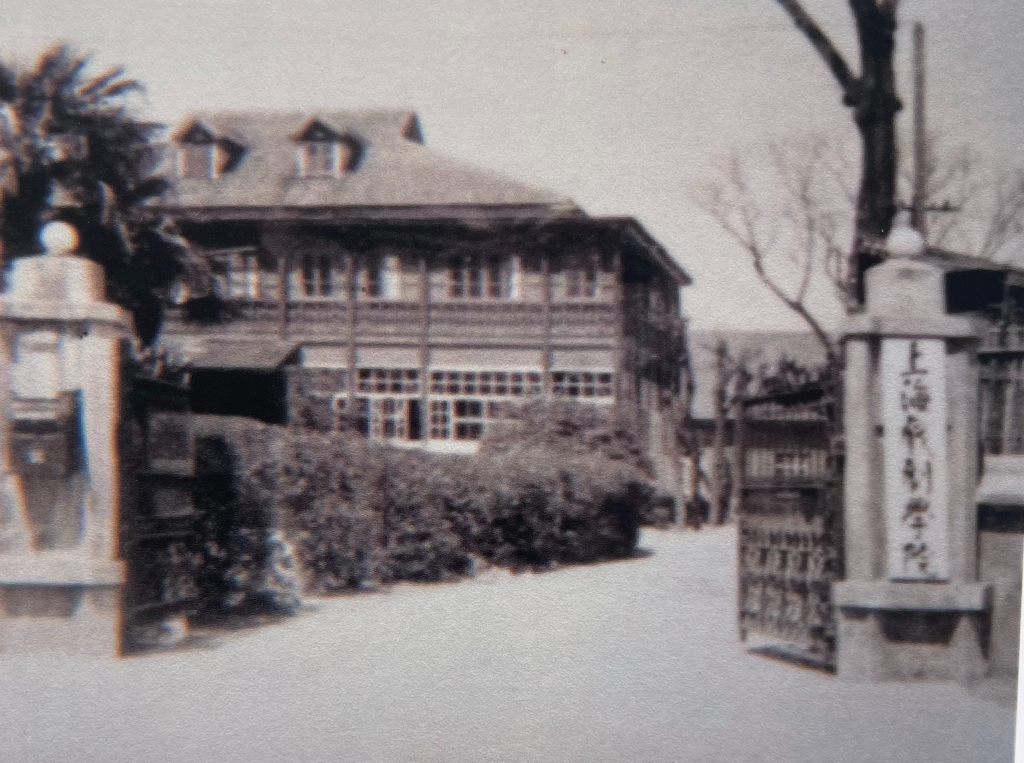
The Shanghai Theatre Academy, a prestigious institution renowned for its theatrical performances, has nurtured a group of outstanding artists who have influenced visual arts in China and even the world over the past eighty years. Since its founding in 1945, how has the academy's art education transcended the practical function of stage design to create the remarkable "Shanghai Theatre Academy phenomenon" in the art world?
The Paper learned that the "Phenomenon·Shanghai Theatre Academy: Art Exhibition Commemorating the 80th Anniversary of the Founding of Shanghai Theatre Academy" was recently opened to the public at the Shanghai Haipai Art Museum. The exhibition systematically showcases the achievements of Shanghai Theatre Academy's art education over the past 80 years through five sections: "Pioneering Pioneers", "Major Contributions", "Experimental Exploration", "Students Worldwide" and "Seeds of the Future".
The exhibition brings together more than 150 works by 131 artists from the Shanghai Theatre Academy over the past 80 years. It includes paintings and documents by famous artists such as Xiong Foxi and Yan Wenliang during the Republic of China period, representative works by Zhang Zuying, Chen Junde, Cai Guoqiang, and Yu Xiaofu, as well as AI art creations full of exploration by young students. It presents the "Shanghai Theatre Academy phenomenon" in Shanghai's art education and witnesses the diversity and cross-border nature of Shanghai's art education.

The main gate of the Shanghai Theatre Academy at 630 Huashan Road, Shanghai, in 1956.
The Origins of the "Shanghai Theatre Academy Phenomenon": From Pioneering Foundations to Diverse Expansion
Upon entering the "Phenomenon·Shanghai Theatre Academy: Art Exhibition Commemorating the 80th Anniversary of the Founding of Shanghai Theatre Academy" exhibition hall at the Shanghai Haipai Art Museum, one is greeted by a group of huge portrait posters, including Xiong Foxi, Yan Wenliang, Sun Haoran, Xu Fubao, and others, all of whom are pioneers in art education at the Shanghai Theatre Academy.
The predecessor of Shanghai Theatre Academy was Shanghai Municipal Experimental Drama School, which was founded on December 1, 1945 by famous playwrights Li Jianwu, Gu Zhongyi, Huang Zuolin and others. Mr. Xiong Fuxi was the first president. In the same year, the Department of Stage Design was established, and the early stage design education brought together a group of famous masters.
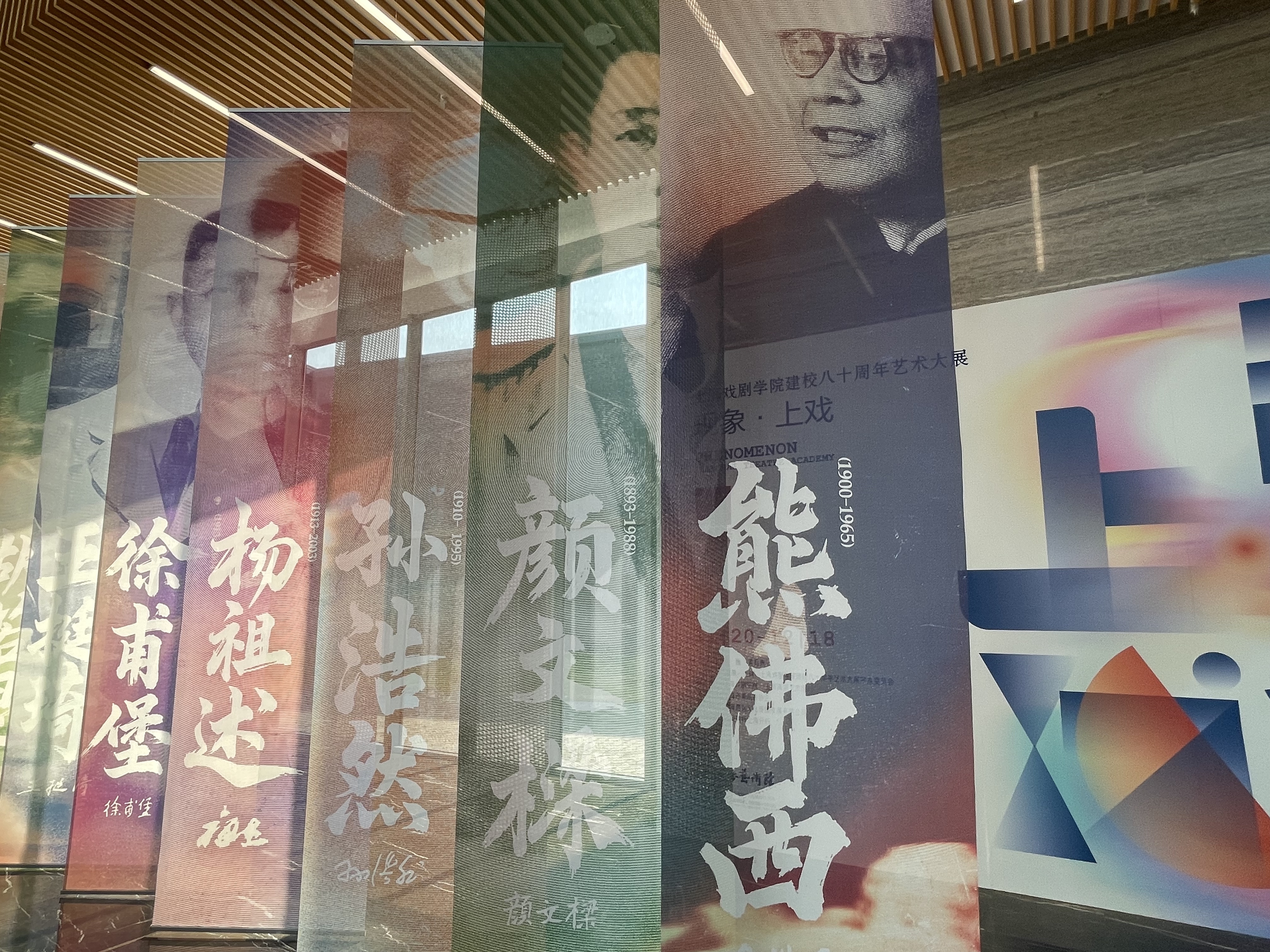
The prologue hall of the "Phenomenon·Shanghai Theatre Academy: An Art Exhibition Commemorating the 80th Anniversary of the Founding of the Shanghai Theatre Academy" at the Shanghai Haipai Art Museum. (Photo from The Paper)

Documents from "Phenomenon·Shanghai Theatre Academy: Art Exhibition Commemorating the 80th Anniversary of the Founding of Shanghai Theatre Academy"
The "Phenomenon·Shanghai Theatre Academy" exhibition's "Pioneers" section focuses on the artistic practices and documents of early educators such as Xiong Foxi and Yan Wenliang, including Xiong Foxi's traditional Chinese painting "Joyful Occasion" and Yan Wenliang's landscape oil painting. They have always regarded solid basic art training as the foundation for cultivating artistic talents in art education.

Landscape paintings by Yan Wenliang on display
In 1958, the Shanghai Theatre Academy established its only "Crafts and Fine Arts Class" in its history, a unique attempt in the academy's art education. The sketching teacher, Xu Fubao, was a student of Liu Kaiqu, the color teacher, Yang Zushu, was a distinguished student of Yan Wenliang and Xu Beihong, and Professor Zhou Xibao was a prolific and renowned expert in the history of Chinese costumes and crafts design.
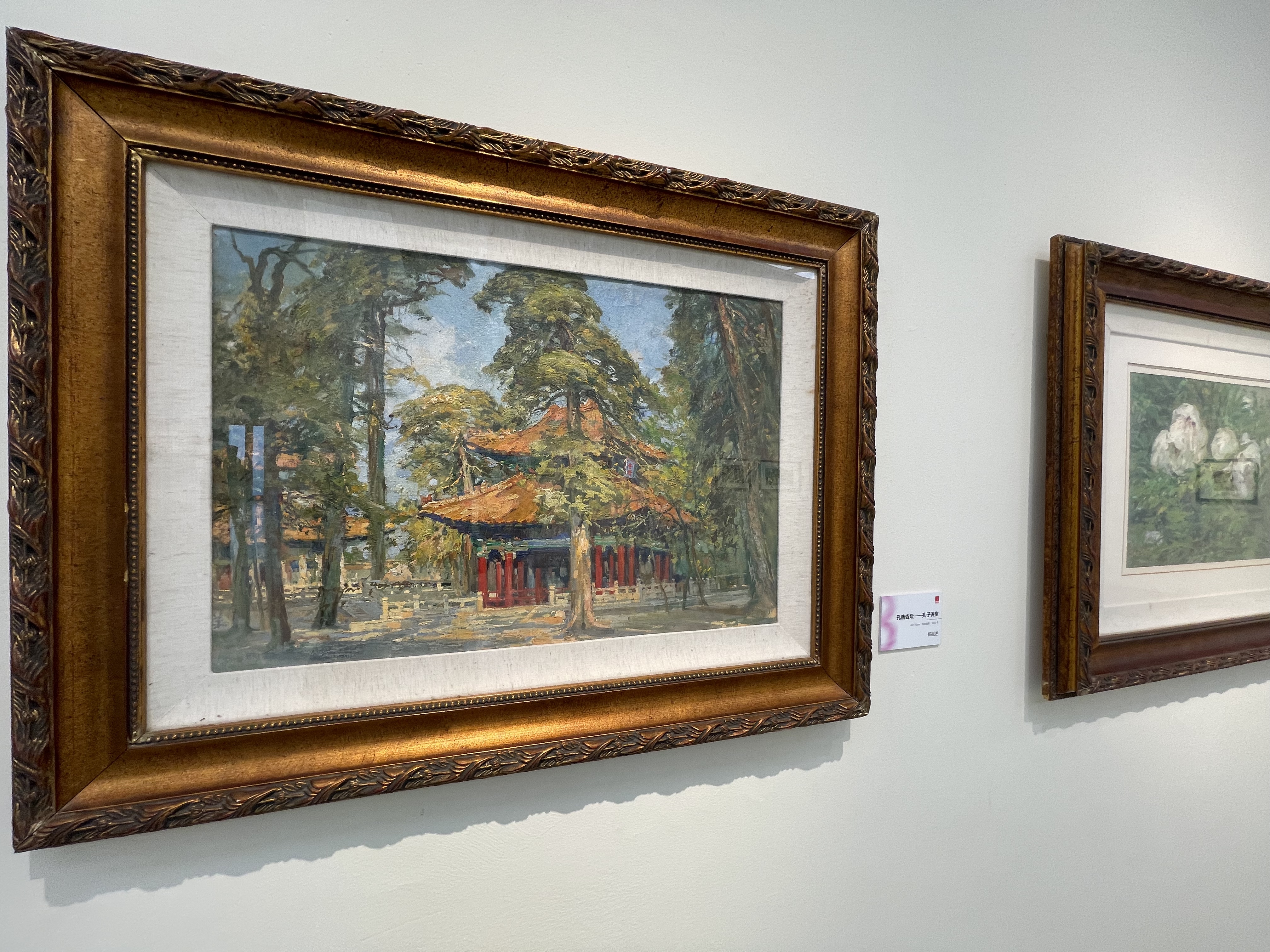
Exhibition scene at Shanghai Haipai Art Museum
In the 1970s and 80s, the Shanghai Theatre Academy (SFA) was commissioned by the Ministry of Culture to establish a Fine Arts Department, which included three majors: oil painting, traditional Chinese painting, and printmaking. At that time, Shanghai lacked higher art institutions, and SFA took the lead in undertaking the important task of cultivating art talents. In those years, the landscape painting teaching of the SFA's Stage Design Department was particularly famous. Because stage scenery required painting large-scale landscapes, it inadvertently honed students' ability to organize the composition and control color.
Regarding the art education at the Shanghai Theatre Academy, artist Hu Xiangcheng once recalled: "The existence of the stage design department at the Shanghai Theatre Academy was to set up the stage for dramas. Painting was just a basic course serving 'the other' in the comprehensive art of theatrical space, lighting, and sound. Because there was no need for a theme, what to paint was no longer important. In the spare time when we were working together to complete collectivist theatrical art, how to paint became everyone's interest. There was no authority or theme, so the style was open. Of course, this also has some connection with the modernist experiments left over from early Shanghai."
"By the early 1980s, explorations of various figurative and abstract forms and materials were widespread. There were all sorts of studies on gouache and oil painting, oil painting on rice paper, painting installations, and the application of water and fire in painting. Yang Zushu, Hu Ruosi, Xu Fubao, Kong Boji, Chen Jinghe, Jiang Youzuo, Gao Shenghui, Liao Jiongmo, Hou Fengmin, Lin Ximin, Fang Sicong, Chen Junde, Wang Bangxiong, Li Shan, Li Wei, Hu Yuxin... each displayed their unique talents, and almost everyone's painting style was different," said Hu Xiangcheng.

In 1976, faculty and students from the Stage Design Department of the Shanghai Theatre Academy sketched in Huangshan.
The Formation of the "Shanghai Theatre Academy Phenomenon": Cross-disciplinary Integration and the Breadth of Art
The concept of the "Shanghai Theatre Academy Phenomenon" was first proposed by the art world at the end of the last century, referring to the emergence of a group of visual artists who have had a significant impact both domestically and internationally from a small, well-established art academy like the Shanghai Theatre Academy. The "Major Contributions" section of the "Phenomenon: Shanghai Theatre Academy" exhibition brings together representative works by influential artists such as Zhang Zuying, Cai Guoqiang, Zhou Changjiang, and Yu Xiaofu. The "Experimental Exploration" section highlights the pioneering spirit of artists like Chen Zhen, Li Shan, and Zhang Jianjun in contemporary art, showcasing the experimental spirit of Shanghai Theatre Academy members before and after the '85 New Wave.
Some art scholars believe that the "Shanghai Theatre Academy phenomenon" stems from the academy's unique art education philosophy and interdisciplinary training model. The academy's stage design education includes solid foundational art courses; regardless of the specialization, art learning and creative ability are fundamental requirements for stage design talent cultivation. When this solid foundational teaching collides with the diversified expression of theatrical concepts and the multi-media presentation of stage design, it creates an effect of breaking down barriers, empowering cross-disciplinary collaboration, and fostering integrated innovation. Unlike specialized art schools, the Shanghai Theatre Academy, as a comprehensive art institution, offers a complete range of majors including directing, acting, drama, and stage design. This multidisciplinary environment provides students with a unique fertile ground for growth.

Exhibition site
Critic Fan Zhongming, who did not graduate from the Shanghai Theatre Academy, recalled: "Compared with other art schools, the Shanghai Theatre Academy was somewhat special from the beginning. This was not because of its long history, nor because it had any connection with the glamorous entertainment industry. For those who studied art, the most important reason was that the Shanghai Theatre Academy had several veteran art teachers (professors) from the Republican era, such as Mr. Min Xiwen and Mr. Yang Zushu. Their consistent advocacy and the creative philosophy they upheld and passed down was that art should fully reflect the individual and their different personalities. From a certain perspective, this is the artistic creation concept that is most accessible to the basic form of art."

Works by Chen Junde on display
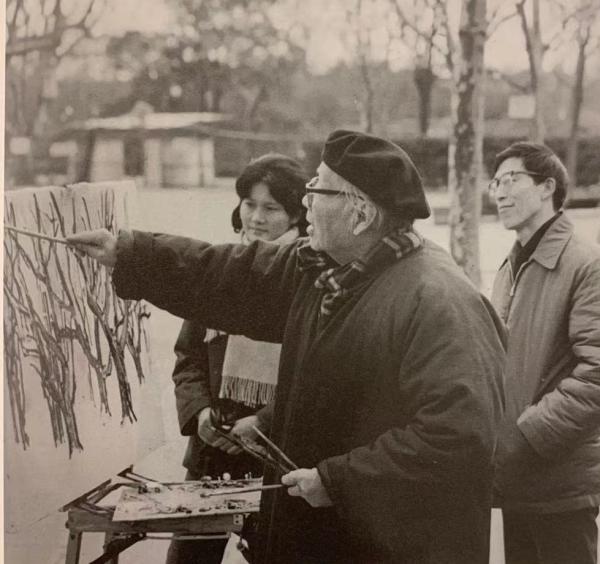
In 1977, Chen Junde and his wife sketched with Liu Haisu in Fuxing Park.
Chen Junde (1937-2019), a graduate of the Stage Design Department of the Shanghai Theatre Academy in 1960, was an important contemporary Chinese oil painter, art educator, and reclusive painter. His neo-expressive oil paintings were lyrical, bright and unconventional, and fluid and expressive. At the Shanghai Theatre Academy, he studied under Yan Wenliang and Min Xiwen, and also sought guidance from renowned artists such as Liu Haisu. According to Chen Junde's recollection, Yan Wenliang's lectures at the Shanghai Theatre Academy were like conversations, where he would explain concepts such as light and shadow in a clear and thorough manner. After graduation, they would sometimes go out to sketch together, and Chen Junde would help Yan Wenliang buy art supplies. "The greatest gain from interacting with the old gentleman was not learning techniques, but learning their attitude towards painting and their character."
Chen Junde's recollections reveal the relaxed atmosphere of arts education at the Shanghai Theatre Academy.

Yan Wenliang watching student works at the Shanghai Theatre Academy
In his article on the "Shanghai Theatre Academy Phenomenon," art scholar and professor Wang Bangxiong of the Shanghai Theatre Academy argues that stage design is not merely a two-dimensional expression, but a spatial display. It requires numerous installations and materials, thus developing students' material application skills more effectively than those in art schools that focus solely on painting. Furthermore, landscape painting is less concerned with ideology, allowing students to express themselves boldly, freely, and relaxedly, unconsciously cultivating a "methodless" artistic creation. He concludes that "the 'materialization' of art cannot be separated from human concepts; it cannot be separated from the human spiritual world. The broader and freer the spiritual world, the wider and more expansive the realm of art."
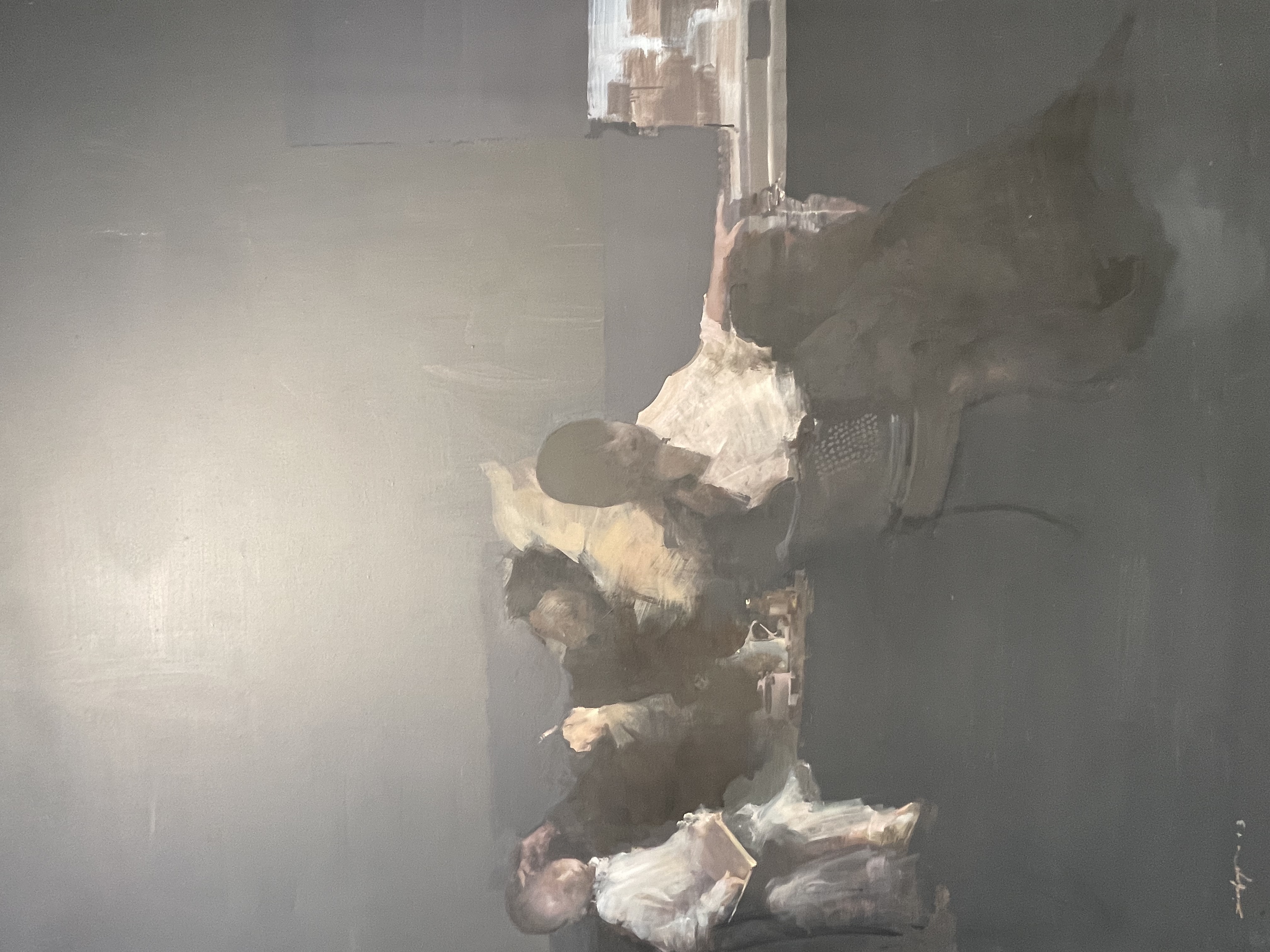
Works by Yu Xiaofu on display
Judging from the exhibited works, whether it is the representative works of Yu Xiaofu, Cai Guoqiang, Zhang Zuying and others, or the works of Chen Junde and Li Shan, or the AI art creations full of exploration by young students, we can see this kind of spiritual world. The artistic education lineage and genes of Shanghai Theatre Academy over the past eighty years are clearly visible.

Cai Guo-Qiang's works on display

Li Lei's works on display

The "Seeds of the Future" section of the "Phenomenon·Shanghai Theatre Academy" exhibition showcases works.
It is reported that the "Phenomenon·Shanghai Theatre Academy" exhibition, as one of the important activities of the 80th anniversary celebration of Shanghai Theatre Academy, will continue until December 18.
